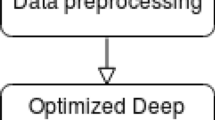Abstract
A large volume of solar energy dissemination in a supply grid originates extreme variations in the load, resulting in a duck-form load arc that can cause stability issues. Also, the cost of energy consumption is found to vary between the off-peak and peak loads observed in the duck-shaped load curve. Accurate load forecast and demand response program is a key task for duck curve management in a distribution structure. Hence, this work proposes a Demand Response (DR) program using deep learning neural networks namely Long Short-Term Memory (LSTM). The proposed DR program is implemented in a modified 12 bus radial distribution network for duck curve management, where voltage stability is taken care of simultaneously minimizing the electricity cost in an energetic pricing environment. LSTM is used for forecasting the load and linear programming is used for load shedding. Therefore, this paper resolves the dual aims of flattening the duck-shaped load arc and minimizing electricity costs by combining them into a single objective function.








Similar content being viewed by others
References
Beigvand S D, Abdi H and Singh S N 2017 Voltage stability analysis in radial smart distribution grids. IET Gener. Transm. Distrib. 11(15): 3722–3730
Kamel M, Karrar A A and Eltom A H 2017 Development and application of a new voltage stability index for on-line monitoring and shedding. IEEE Trans. Power Syst. 33(2): 1231–1241
Akbarzadeh Aghdam P and Khoshkhoo H 2020 Voltage stability assessment algorithm to predict power system loadability margin. IET Gener. Transm. Distrib. 14(10): 1816–1828
Zaheb H, Danish M S S, Senjyu T, Ahmadi M, Nazari A M and Wali M et al. 2020 A contemporary novel classification of voltage stability indices. Appl. Sci. 10(5): 1639
Tavakoli M, Shokridehaki F, Akorede M F, Marzband M, Vechiu I and Pouresmaeil E 2018 CVaR-based energy management scheme for optimal resilience and operational cost in commercial building microgrids. Int. J. Electr. Power Energy Syst. 100: 1–9
Lu R and Hong S H 2019 Incentive-based demand response for smart grid with reinforcement learning and deep neural network. Appl. Energy. 236: 937–949
Taylor Z, Akhavan Hejazi H, Cortez E, Alvarez L, Ula S and Barth M et al. 2017 Customer-side SCADA-assisted large battery operation optimization for distribution feeder peak load shaving. IEEE Trans. Smart Grid. 10(1): 992–1004
Khan Z A, Zafar A, Javaid S, Aslam S, Rahim M H and Javaid N 2019 Hybrid meta-heuristic optimization based home energy management system in smart grid. J. Ambient Intell. Hum. Comput. 10: 4837–4853
Yan X, Ozturk Y, Hu Z and Song Y 2018 A review on price-driven residential demand response. Renew. Sustain. Energy Rev. 96: 411–419
Gaber M, El Banna S, El Dabah M and Hamad M 2021 Designing and implementation of an intelligent energy management system for electric ship power system based on adaptive neuro-fuzzy inference system (ANFIS). Adv. Sci. Technol. Eng. Syst. J. 6(2): 195–203
Das N R, Nayak M, Rai S C and Nayak A K 2021 An analysis of various demand response techniques in smart grid. Intell. Cloud Comput. 1: 511–520
Moon Jihoon, Kim Junhong, Kang Pilsung and Hwang Eenjun 2020 Solving the cold-start problem in short-term load forecasting using tree-based methods. Energies 13(4): 886. https://doi.org/10.3390/en13040886
Lugnani L, Dotta D, Lackner C and Chow J 2020 ARMAX-based method for inertial constant estimation of generation units using synchrophasors. Electr. Power Syst. Res. 180: 06097
Royvaran M, Hormozabad S J, Soto M G and Davis B 2020 Investigation on the relationship between wave propagation speed and vibration frequency in concrete floors using nonlinear regression model. In: Smart Structures and NDE for Industry 4.0, Smart Cities, and Energy Systems, vol. 11382, pp. 70–82
Gupta P, Malsa N, Saxena N, Agarwal S and Singh S P 2020 Short-term load forecasting using parametric and non-parametric approaches. In: Soft Computing: Theories and Applications, pp. 747–755
Ardabili S, Beszedes B, Nadai L, Szell K, Mosavi A and Imre F 2020 Comparative analysis of single and hybrid neuro-fuzzy-based models for an industrial heating ventilation and air conditioning control system. In: 2020 RIVF International Conference on Computing and Communication Technologies, pp. 1–6
Thara S and Poornachandran P 2022 Social media text analytics of Malayalam-English code-mixed using deep learning. J. Big Data. 9(1): 45
Capuano N, Caballé S, Conesa J and Greco A 2021 Attention-based hierarchical recurrent neural networks for MOOC forum posts analysis. J. Ambient Intell. Hum. Comput. 12: 9977–9989
Moradzadeh A, Zakeri S, Shoaran M, Mohammadi Ivatloo B and Mohammadi F 2020 Short-term load forecasting of microgrid via hybrid support vector regression and long short-term memory algorithms. Sustainability. 12(17): 7076
Gundu V, Simon S P, Sundareswaran K and Panugothu S R N 2020 Gated recurrent unit based demand response for preventing voltage collapse in a distribution system. Turk. J. Electr. Eng. Comput. Sci. 28(6): 3319–3334
Zhao T, Wang J and Zhang Y 2019 Day-ahead hierarchical probabilistic load forecasting with linear quantile regression and empirical copulas. IEEE Access. 7: 80969–80979
Kazmi S A A, Shahzaad M K and Shin D R 2017 Voltage stability index for distribution network connected in loop configuration. IETE J. Res. 63(2): 281–293
Author information
Authors and Affiliations
Corresponding author
Rights and permissions
Springer Nature or its licensor (e.g. a society or other partner) holds exclusive rights to this article under a publishing agreement with the author(s) or other rightsholder(s); author self-archiving of the accepted manuscript version of this article is solely governed by the terms of such publishing agreement and applicable law.
About this article
Cite this article
Gundu, V., Simon, S.P. Duck shaped load curve supervision using demand response program with LSTM based load forecast. Sādhanā 49, 201 (2024). https://doi.org/10.1007/s12046-024-02532-w
Received:
Revised:
Accepted:
Published:
DOI: https://doi.org/10.1007/s12046-024-02532-w




